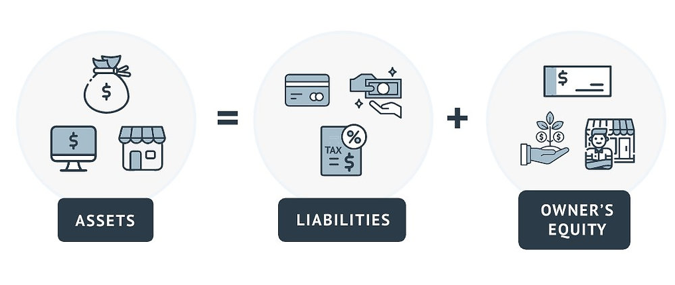
Understanding a Balance Sheet
The balance sheet is a financial statement that provides a clear snapshot of a company’s financial position at a specific point in time. It is structured around the fundamental accounting equation:

This relationship ensures that every economic resource the company controls is accounted for, whether it comes from borrowing money or from owners’ investments. To better understand the balance sheet, we will take a closer look at its three main components: assets, liabilities, and stockholders’ equity.
Assets
Assets represent the resources a company controls that are expected to bring future economic benefits to the firm. They are presented in order of liquidity—the ease at which an asset can be converted into cash—and are separated into current and noncurrent assets.
Current assets are short-term resources that are expected to be used or converted into cash within one year or within the company’s operating cycle. Examples include cash and cash equivalents, accounts receivable (payments owed to the firm, typically within 1-3 months), supplies, prepaid expenses, and inventory.
Noncurrent assets are long-term resources that cannot be liquidated within the next year. These include property, plant, and equipment (PP&E), intangible assets like trademarks and patents, and long-term investments. Although these assets cannot quickly convert to cash, they are still important to a firm for generating revenue over long periods of time.
Understanding a company’s assets helps stakeholders effectively gauge its operational capacity, capital, and potential for future growth.
Liabilities
Liabilities represent the company’s financial obligations, including amounts owed to creditors, suppliers, and other stakeholders. Similar to assets, liabilities are divided based on when they are due.
Current liabilities are financial responsibilities that are expected to be settled within one year. These include accounts payable (outstanding money a firm owes to its suppliers), accrued expenses, short-term loans, and rent payments payable within the next year.
Long-term liabilities are obligations that extend beyond one year. These include long-term loans (e.g., mortgages), capital leases on equipment, deferred income taxes, and pension liabilities.
A company’s liabilities in their balance sheet explain their financial leverage and risk. When liabilities are mostly balanced with assets, we can conclude that the firm is financially healthy. However, if there is excessive debt in relation to its assets, the company might have solvency issues and could indicate declining profitability.
Stockholders’ Equity
Stockholders’ equity represents the residual interest in the company’s assets after all liabilities have been paid. It is composed of two parts: contributed capital and retained earnings.
Contributed capital includes common stock (publicly traded shares of stock) and additional paid-in capital (amount shareholders have directly invested into the company).
Retained earnings are profits the company has earned and kept rather than distributed as dividends. Over time, these earnings can be reinvested back into the business to fund growth, pay off debt, and build cash savings. Alternatively, they could be paid out as dividends to shareholders.
Stockholders’ equity is a measure of long-term financial sustainability because a positive, growing balance displays consistent profitability by the company.
The Importance of a Balance Sheet
The balance sheet is an important financial statement because it provides useful information for stakeholders, internal management, and regulators. Investors and lenders can utilize the balance sheet to determine the company’s financial stability before investing, ensuring it has the resources to generate positive returns. Internal management can easily track performance by comparing balance sheets from different periods, identifying trends, and locating areas for improvement or concern. Finally, regulators use it to ensure market integrity and to protect the stability of the financial system.
